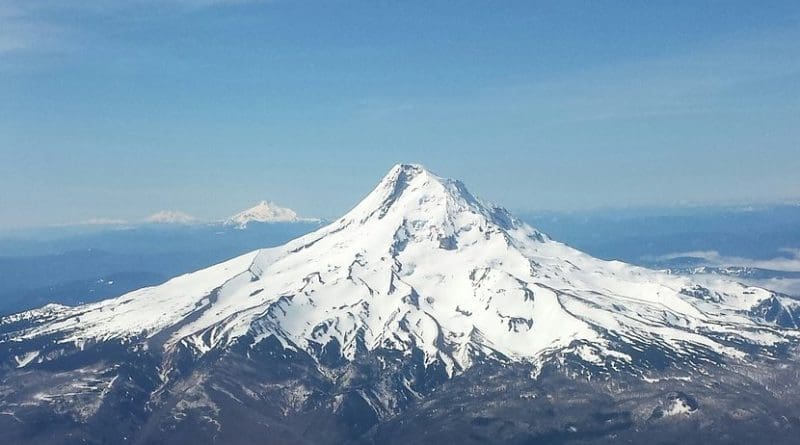How Hood River Watershed Can Become More Resilient To Climate Change
Hood River, long an agricultural center for Oregon, faces an uncertain future of climate impacts, but a new Portland State University study lays out strategies that the watershed can adapt to become more resilient to the inevitable changes.
Glaciers are receding and snowpack levels are peaking earlier and declining faster, meaning farmers will lose water during the crucial months of the growing season and local tribes have to grapple with the collapse of once-flourishing salmon runs, the study says.
“If the East Fork Irrigation District doesn’t find a way to store water that works in the time-release way that snowpack would, then they’re going to lose millions of dollars in agriculture production,” said Alexander Ross, the study’s co-author and an adjunct instructor in geography at PSU. “They have to prepare for a serious change in stream flows.”
Using a systems dynamic model, Ross and geography professor Heejun Chang tested resilience — the capacity for the system to “bounce back” — to climate trends by observing whether farmers could maximize the amount of water used for agricultural production in a drought year while also maintaining minimum flow requirements for salmon rearing.
They tested three adaptive strategies:
- Irrigation infrastructure improvements, including closing off piping canals that lose water to both evaporation and overflow and building water-conserving piping canals
- Water banking, a system in which an alternating set of farmers allow their fields to go fallow or grow less water-intensive crops such as hay during the season in exchange for compensation from a general fund
- Water conservation by implementing a balancing feedback mechanism that adapts to lower river flows by automatically lowering irrigation consumption in real time
The model found that infrastructure improvements would not compensate for total water loss given the warming scenarios, meaning upgrades would be an added benefit to the other strategies but not a sufficient stand-alone strategy.
With water conservation, the feedback mechanism can return enough water to maintain minimum stream flows, but leads to shortfalls in irrigation withdrawals during a drought, depleting nearly 29% of water demand during the growing season. The researchers said that community resilience would require collaborative efforts to engage in water sharing practices such as water banking, responsible adherence to voluntary restrictions and, in the long term, diversification of crops to prepare for a changing climate.
The water banking scenarios, which exist in many forms and in most western states, did save a significant amount of water during the critical dry season, but were less flexible and responsive than the feedback method.
The researchers say that overall resilience can be achieved through a combination of water banking, infrastructure improvements and reflexive feedback mechanisms. Instead of prioritizing irrigation alone in what would likely be a short-term solution, Ross and Chang suggest farmers take advantage of the above adaptive strategies that assess changing seasonal variability and adjust withdrawals accordingly.
“All of these are on the table for the Hood River Watershed Group,” Ross said. “The silver lining is that there’s a good collaborative infrastructure between the irrigation districts, environmental groups and tribes who are dedicated to maintaining habitat for endangered species, fish habitat and restoring the basin.”
The study was published in the journal Hydrological Sciences Journal.

